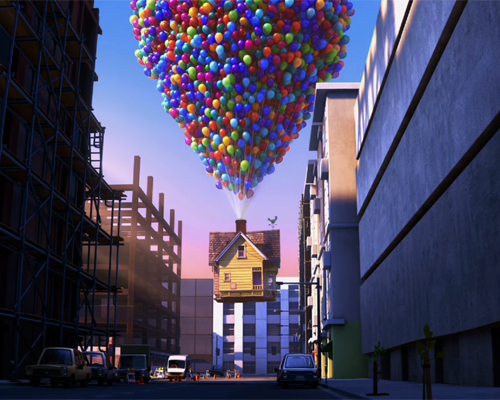July 2009 Archives
Om du har sett Public Enemies kanske du uppskattar det här vältaliga vittnet från kvällen då John Dillinger sköts till döds.
Jag hade nog hellre sett att det öppnat en riktigt fin ostbutik, eller nåt, här i hörnet S:t Paulsgatan/Kvarngatan, men nu verkar det som att det ska bli ytterligare en "kaffebar" (av samma som hade den där på Hornsgatan/Bysis torg) här (där Platanovs Livs låg, som det ju är väldigt synd att den tvingades lägga ner).
Uppdatering: Carl berättar ju att den där vapenbutiken på Skånegatan ska lägga ner också. Var ska man nu handla sina handeldvapen? Det blir säkert en "kaffebar" där med.
›› Jag tycker det är sympatiskt när folk bestämmer sig för att frige floder, åar och bäckar, som i Seoul t.ex., där man för några är sedan frilade floden Cheonggyecheon som rinner genom staden, tidigare övertäckt till förmån för vägar och trottoarer. "Daylighting", kallas det tydligen. New York Times:
›› En riktigt intressant artikel hos The Atlantic om diverse "geo-engineering"-projekt som skulle kunna rädda oss från växthuseffekten. Ideer som att låta tusentals fartyg på världshaven spruta upp havsvatten i molnhöjd så att de bättre kan blockera solen; eller skjuta upp gigantiska solskydd i rymden, också för att skydda jorden från soljus; eller sänka temperaturen genom att injicera svavel i atmosfären, och skapa en "vulkaneffekt". (Se också Vattenfalls "Carbon capture and storage"-teknologi, eller varför inte Markus Larssons Dune-idé för att hindra ökenspridningen). Vem blir först?
The restoration of the Cheonggyecheon is part of an expanding environmental effort in cities around the world to "daylight" rivers and streams by peeling back pavement that was built to bolster commerce and serve automobile traffic decades ago. [...]›› Ett begrepp/verksamhet jag just lärt mig: "Pleistocene Rewilding" - idéen att återintroducera djur som lejon, kameler och elefanter på den nordamerikanska kontinenten, där de för ca 13 000 år sedan (under den pleistocena epoken) sprang fria. ı (Karl Schroeder pratar om "rewilding" i ett annat sammanhang, och det verkar dessutom vara en märklig gren inom anarkismen.)
By building green corridors around the exposed waters, cities hope to attract affluent and educated workers and residents who appreciate the feel of a natural environment in an urban setting.
›› En riktigt intressant artikel hos The Atlantic om diverse "geo-engineering"-projekt som skulle kunna rädda oss från växthuseffekten. Ideer som att låta tusentals fartyg på världshaven spruta upp havsvatten i molnhöjd så att de bättre kan blockera solen; eller skjuta upp gigantiska solskydd i rymden, också för att skydda jorden från soljus; eller sänka temperaturen genom att injicera svavel i atmosfären, och skapa en "vulkaneffekt". (Se också Vattenfalls "Carbon capture and storage"-teknologi, eller varför inte Markus Larssons Dune-idé för att hindra ökenspridningen). Vem blir först?
The scariest thing about geo-engineering, as it happens, is also the thing that makes it such a game-changer in the global-warming debate: it's incredibly cheap. Many scientists, in fact, prefer not to mention just how cheap it is. Nearly everyone I spoke to agreed that the worst-case scenario would be the rise of what David Victor, a Stanford law professor, calls a "Greenfinger"--a rich madman, as obsessed with the environment as James Bond's nemesis Auric Goldfinger was with gold. There are now 38 people in the world with $10 billion or more in private assets, according to the latest Forbes list; theoretically, one of these people could reverse climate change all alone.
Av någon outgrundlig anledning fick jag i februari 2005 för mig att skriva om USAs "nationalarkivarie" (då skulle Allen Weinstein utses av George W. Bush). Därmed inte mer än rätt att nu skriva om den av Barack Obama just tillsatta nya "Archivist of the United States", David Ferriero. Som faktiskt är bibliotekarie (var senast chef för New York Public Library). Library Journal har lite bakgrund. Och New York Times The Caucus Blog skriver:
Leaving his current position would mean an almost certain pay cut. In 2005, his salary was listed as $349,066 - just a bit less than Mr. Obama makes now.
In recent years, the ordinarily low-profile job has generated a bit of attention as some agencies and officials push to keep certain records a secret.
Den forne The Clash-medlemmen har, som bekant, öppnat ett "public library" i London, knökfullt med hans samlingar av Clash-memorabilia - Mick Jones The Rock n Roll Public Library. Det är väl kanske mer ett museum än ett bibliotek, förutom den lilla fina detaljen att det finns en scanner på plats, som man får använda för att scanna in visst material till ett eget USB-minne. Neat!
Nyfiken på hur det ser ut? Kolla in Steve Bowbricks Flickr-set från ett besök.
SvD har en serie om kända människors privata bibliotek.
Kulturministern:
Hos Forgotten Bookmarks samlar en antikvarisk bokhandlare upphittade saker mellan bladen.
Kulturministern:
Böckerna är sorterade från A till Ö och god ordning råder i rummet med utsikt över vattnet, en liten öppen spis, två pälsbeklädda fåtöljer och guldkristallkrona i taket.Rikard Wolff:
Böckerna i Rikard Wolffs bokhylla är tätt packade och sorterade efter storlek: tunga fotoböcker längst ner och små pocketar högst upp mot taket.I The Guardian fördöms alfabetisering å det grövsta, men det här var lite sympatiskt:
One colleague orders her books according to which authors she feels would be friends in real life - regardless of the centuries that separate them.Mer hos The Guardian: lustiga marginalanteckningar hittade i biblioteksböcker | En lång serie porträtt av författares skrivarlyor.
Hos Forgotten Bookmarks samlar en antikvarisk bokhandlare upphittade saker mellan bladen.
Jag inleder dagen med ett underbart stycke prosa:
WPP's Wunderman has its own text-mining tool called the Listening Platform, which it has used for a number of clients including Microsoft. Slavi Samardzija, senior VP-insights and optimization at Wunderman, said the agency has used it for research, identifying influencers, acquisition, micromessaging, microtargeting for CRM, structuring ad programs and product innovations as well as locating barriers to purchase. Wunderman clients using the Listening Platform get weekly reports highlighting key changes in language that are customized for the business groups most affected.[AdAge - "Text Mining Provides Marketers With the 'Why' Behind Demand", via Beyond The Beyond]

Apropå kataklysmer och Los Angeles, här är ett ganska långt utdrag från Bruce Sterlings The Caryatids (vilket tjat!), där vädret under Kalifornien håller på att blåsa upp till en "supervulkan" (det är också en upprepning av klimatkonsensusdebatten, framskjuten 50 år + att det finns tecken på att den semantiska webben kommer att utvecklas fram till 2060):
It was an old trick, but often a good one. Most trend-spotters using the net looked for rising news items that were gaining public credibility. But you could learn useful things in a hurry if you searched for precisely the opposite. News that should have public credibility, but didn't.
Sometimes the public was told things that the public couldn't bear to know.
Fortsätt läsa Tänk om en supervulkan skulle få ett utbrott i Entourage?.
Förra sommaren var jag med om några läskiga litterära sammanträffanden (1, 2). Häromdagen ville det sig inte bättre än att jag först läste om hur kinesiska forskare ju lyckats klona musen Tiny, och direkt därefter läste följande stycke i Bruce Sterlings The Caryatids:
"Let me quickly brief you about my friend here," said Lionel. "The rider in the hairy wolf mask. He calls himself 'Vice Premier Li Rongji.' He is very serious about his name and his official Chinese title. He's a fanatic. So please don't tease him."(Jag rekommenderar för övrigt boken helhjärtat. Den är galet kreativ i sina projiceringar av hur samtida teknologi kommer att utveckla sig i framtiden (främst "ubiquitous computing"; boken utspelar sig år 2060) och hur det kommer att vara att leva i en post-klimatkatastrof-värld. Läs mer hos WorldChanging & Pasta&Vinegar.)
"Li Rongji was a great Chinese statesman."
"This man is the great Chinese statesman Li Rongji. He's a clone of a powerful Chinese official from twenty years ago. He's a clone, like you are. That's what John has discovered here. We found out that the Chinese state backed up its entire human regime. It cloned thirty-five key human politicians - I mean the real people inside the state, the crucial power brokers - and it hid them in a hole in the desert. The state even backed up itself. All of itself. It built itself a giant secret clone farm, and a giant secret library, and it hid that business underground in the Gobi, really deep underground, like nuclear-bomb-proof, in a kind of First Emperor of China airtight underground tomb."
När man började titta på Entourage så hade man helt klart fel förväntningar. Jag levde länge i tron att det faktiskt skulle hända något, och ju längre det gick desto mer växte känslan till sig av att något kataklysmiskt skulle inträffa. Men icke. Jordbävningar, piratismen, finanskrisen - inget av detta märks i Entourages lilla bubbla, som är om möjligt ännu mer skyddad från resten av omvärlden än vad SATC någonsin var.
Nu, när serien är inne på sin sjätte säsong, har man ju vant sig. Man sympatiserar med Turtle, som i S06E03 får lite "Birthday Blues" på sin födelsedag, trots att han först får en Ferrari av Vince i present, och sedan en Porsche av sin celebrity girlfriend ("spelad" av Meadow Soprano). (Däremellan har hans manlighet dessutom ifrågasatts av 50 Cent, rullandes i en vit cabbad Rolls-Royce).
Jag förväntar mig således ingen gäst från verkligheten i Hollywood, men en liten grej tycker jag att man kan göra: låt det regna i ett avsnitt.
Nu regnar det säkert inte särskilt mycket i Los Angeles överhuvud taget, men fatta vilken radikal skillnad det skulle göra.
Nu, när serien är inne på sin sjätte säsong, har man ju vant sig. Man sympatiserar med Turtle, som i S06E03 får lite "Birthday Blues" på sin födelsedag, trots att han först får en Ferrari av Vince i present, och sedan en Porsche av sin celebrity girlfriend ("spelad" av Meadow Soprano). (Däremellan har hans manlighet dessutom ifrågasatts av 50 Cent, rullandes i en vit cabbad Rolls-Royce).
Jag förväntar mig således ingen gäst från verkligheten i Hollywood, men en liten grej tycker jag att man kan göra: låt det regna i ett avsnitt.
Nu regnar det säkert inte särskilt mycket i Los Angeles överhuvud taget, men fatta vilken radikal skillnad det skulle göra.
Gick just förbi på Högbergsgatan och noterade att en boende helt enkelt tröttnat på det här med att solen lyser alldeles för lite. Så här ser det ut lite högre upp.
På kort tid har det öppnat två mexikanska äterier i stan. Den ena heter La Neta och ligger på Barnhusgatan 2, och den andra heter Macho! och ligger på Klarabergsgatan 29. Jag har inte provat någon av dem än, men det har På Stan-bloggen gjort (1, 2).
 Ett lite lustigt sammanträffande, i en essä hos 3quarksdaily. Den här turisten hade kunnat vara jag:
Ett lite lustigt sammanträffande, i en essä hos 3quarksdaily. Den här turisten hade kunnat vara jag:I was walking a few feet behind a woman whom I could only assume was a European tourist--she sported the hip walking shoes, half-sneaker, half-moccasin, whose labels are a mystery to American shoe shoppers like me. Even more of a giveaway was the fact that she had pulled out a digital camera and was using it to take a close-up snapshot of the signage on one of the station's dingy white-tiled pillars. The sign read, in black sans-serif type, BL'KER. As charming as the mid-word apostrophe was, I thought that only a tourist would bother to commemorate its existence. To a New York native, the subway is a dead zone, a reminder of daily obligations, something we must get past to start our days, something to block out of our minds.Men inget varar för evigt:
Last week I got off again at the Bleecker St. stop. I noticed that the MTA's construction crews had begun to strip the stained tiles off the station's pillars. Already half of the old, black, block BL'KER signs are gone, and I can only assume the rest will go soon--New York has never been known for hanging onto the past. Which makes a sad kind of sense: Just when you learn to see something in the city where you live, it's gone
Någon som vet när (om?) Jane Campions senaste film, Bright Star (om kärleken mellan John Keats och Fanny Brawne), har Sverige-premiär?
Missade Helena Lindblads intervju med Campion när den visades på Cannes-festivalen:
Missade Helena Lindblads intervju med Campion när den visades på Cannes-festivalen:
Är en historia om stark kärlek baserad på handskrivna brev verkligen något för en e-mejlande, facebookande och twittrande generation?
- Ja, jag tror att idén och drömmen om evig kärlek fortfarande är lika närvarande i vår tid, oavsett om man skriver för hand eller twittrar i mobilen.
Keats House i London har just öppnat efter en restaurering som tagit två år:
Reopened on Friday, it now features period wallpaper, prints, and drawings, and showcases the engagement ring Keats gave Fanny Brawne, the girl next door.Uppdatering: man, vilken fashionista Fanny var, se trailer:
Jag ska till Berlin om en vecka ca, och väldigt passande har den största utställningen om Bauhaus-rörelsen någonsin just öppnat - Modell Bauhaus (på Martin-Gropius-Bau). New York Times recenserar:
This new retrospective marks both the 20th anniversary of the fall of the Berlin Wall and the Bauhaus's 90th birthday. But being big doesn't always augur well for exhibitions, especially when they are burdened by so much political baggage. Nor does it help that there have been so many other shows about the Bauhaus over the years, not to mention essays and books. Does this one say anything new?(Tips på andra absoluta måste-saker att se/göra i Berlin mottages tacksamt!)
Luckily it does. The Berlin exhibition, which was organized collaboratively by the three Bauhaus archives and is to open at the Museum of Modern Art in New York in November, combines famous Bauhaus mementos -- from Marcel Breuer's metal furniture, to Herbert Bayer's graphics and the record-breaking Marianne Brandt teapot that sold for $361,000 at Sotheby's -- with some inspired surprises.
 Ett vinnande arkitektförslag (från Greeen! Architects) för ett bibliotek och studentcenter vid universitetet i tyska Duisburg-Essen, Bibliosphere, är Dödsstjärnan möter Globen. Grönt så det förslår är det också:
Ett vinnande arkitektförslag (från Greeen! Architects) för ett bibliotek och studentcenter vid universitetet i tyska Duisburg-Essen, Bibliosphere, är Dödsstjärnan möter Globen. Grönt så det förslår är det också:The facade of the sphere orientated to the city is planned to become an energyfacade covering several functions. Natural ventilation and lighting of the readin rooms, solar energy, view to the cityscape, generosity of the main hall and climate control.
Through the improvement of worldwide ecology standards, the use of renewable energy ressources and avoiding fossil fuels this building complex becomes a one-of-a-kind building in green building design.
(via: architechnophilia + Inhabitat)

via: Inhabitat:
Producing ice cream clouds with a method developed for altering rainfall called cloud-seeding technology, artists Zoe Papadopulou and Cat Kramer are making the discussion of climate control fun and engaging. The artists' project, called the The Cloud Project, uses a retro ice-cream van with several mounted industrial water sprayers that spout a mix of liquid nitrogen and ice cream, creating a spray that condenses into ice cream clouds.Uppdatering: teknik att kombinera - Hemmagjord marshmallow-kanon.
The BQE är Sufjan Stevens hyllningsfilm/album till motorvägen Brooklyn-Queens Expressway i New York, och till rockringen.
Vissa är för smarta för sitt eget bästa:
The BQE further extends its mythology by anthropomorphizing the expressway and its theoretical conceits into a 40-page comic book (cover by Matt Loux, masthead by Christian Acker), in which three extra-terrestrial superhero sisters (Botanica, Quantus, and Electress) use hula-hoops to combat the "the Messiah of Civic Projects," Captain Moses, and his totalitarian social architecture. The comic book, written by Stevens and gorgeously drawn, colored, and inked by longtime friend and collaborator Stephen Halker, visualizes in graphic form many of the political motifs of the movie and soundtrack: mid-century urban theory, modernism, post-modernism, hoop dynamics, and the spiritual practice of Subud.
Det här ägde rum i London idag: Dominoes 2009. Tusentals betongdominobrickor föll:
At mid-afternoon the blocks will begin their journey in the middle of Mile End Park - a quiet, unobtrusive begining on their long journery through East London. On paths, through parks and even on water, the domino line will wend its way southwards, linking the diverse communities of the areas it passes through in a symbolic as well as physical chain of cause and effect.
Ett av de mer fascinerande ämnena här på bloggen är: hur-ska-det-gå-för-george-w-bush-presidentbibliotek? (Det är sånt här du kommer tillbaka för, va?). Tydligen har man gått in i en "tyst fas", vilket innebär att man förtvivlat försöker hitta donatorer för att få ihop de 200 miljoner doller som återstår för att få ihop det. Här är en underbar detalj i en nyhetsartikel, om hur bibblan ska organiseras (ett slags bizzarro-klassifikationssystem):
The library will be set up in the form of a case study that is different from most presidential libraries, which are done biographically. The library will demonstrate steps Bush took in making 22 key decisions while in office, says Langdale. The setup shows which core principles, such as compassion and freedom, Bush reverted back to when making governmental choices.
Det är idag inte bara 40 år sedan resan mot månen påbörjades, utan också 46 år sedan det första atombombstestet genomfördes i öknen i New Mexico, på Trinity-platsen. Funny fact! Robert Oppenheimer lär ha döpt platsen efter en vers av John Donne ("Batter my heart, three person'd God", i Holy Sonnets XIV). När samme John Donne, i Ignatius His Conclave från 1611, driver med samtidens vetenskapsmän Kopernikus, Kepler, Brahe och Galileo, önskar han att Ignatius Loyola skulle skickas till månen för att starta en Lunatique Church. John F. Kennedy var katolik. Say no more.
Uppdatering: bara dagarna före "launch" för Apollo 11 besökte Etiopiens kejsare Haile Selassie Kennedy Space Center, och om man ska döma av den här bilden var han väldigt intresserad av möjligheterna för att låta rastafari-sekten kolonisera månen:
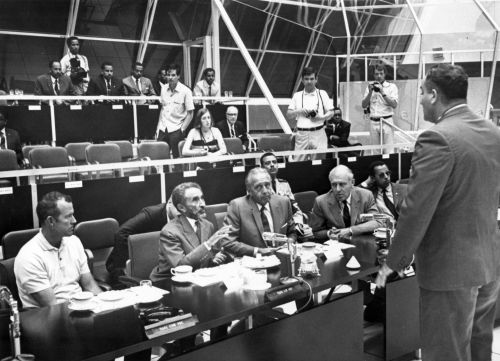
Uppdatering: bara dagarna före "launch" för Apollo 11 besökte Etiopiens kejsare Haile Selassie Kennedy Space Center, och om man ska döma av den här bilden var han väldigt intresserad av möjligheterna för att låta rastafari-sekten kolonisera månen:

 Det tog 45 år för dom, men nu fanimej är dom klara! Engelska-institutionen vid universitetet i Glasgow började 1965 med att sammanställa Historical Thesaurus of the Oxford English Dictionary, och nu kan de äntligen öppna champagnen, för att de två volymerna på 4448 sidor med över 800 000 ord (hela OED), fint ordnade i drygt 230 000 kategorier, med synonymer kronologiskt ordnade efter när de först började användas, finns äntligen att köpa i en välsorterad boklåda.
Det tog 45 år för dom, men nu fanimej är dom klara! Engelska-institutionen vid universitetet i Glasgow började 1965 med att sammanställa Historical Thesaurus of the Oxford English Dictionary, och nu kan de äntligen öppna champagnen, för att de två volymerna på 4448 sidor med över 800 000 ord (hela OED), fint ordnade i drygt 230 000 kategorier, med synonymer kronologiskt ordnade efter när de först började användas, finns äntligen att köpa i en välsorterad boklåda.BBC skriver:
The work was nearly destroyed in a fire in 1978, but despite the building being gutted, a metal filing cabinet protected the files. [...]
The thesaurus was nearly completed in 1980, but the team decided to include words from updated versions of the Oxford English Dictionary.
This added almost 30 years more work to the project.
Så här beskrivs upplägget, och det är något av ett manifest för en otidsenlig vilja till organisation:
The thesaurus organization follows a unique thematic system of classification, with entries arranged in a comprehensive semantic hierarchy according to their meanings. Each individual synonym is presented in chronological order according to the first recorded date of the word's use in English as listed in the Oxford English Dictionary, with earliest synonyms given first.Jason Kottke skriver:
There are three major sections in the HTOED, reflecting the main activities and preoccupations of users of the language:
I The external world
II The mental world
III The social world
These in turn are divided into 354 major categories, such as Food and drink, Thought, or War. Further categories and subcategories follow, moving from the most general ideas to the most specific. Overall, the HTOED contains around 800,000 meanings, organized into more than 236,000 categories and subcategories.
The semantic categories and subcategories are headed by phrases which define them and link to preceding sections. In the abridged example given here, the headings and numbering show that Terms of endearment, at the fourth level of the semantic hierarchy, are part of Love,Emotion, which in turn comes under The mind.
02 The mind
....
02.02 Emotion
....
02.02.22 Love
....
02.02.22.04 Terms of endearment
....
The HTOED contains obsolete, historical, and archaic vocabulary, as well as the vocabulary of current English; it covers scientific, technical, and specialist terminology as well as slang, dialect, and informal language, and regional varieties of English from all parts of the world. Each term is precisely entered into its place in this comprehensive hierarchy of meaning, according to its meaning and date, and is accessible either by browsing at any level of the hierarchy, or by looking up a particular word in its alphabetical place via the Index.
I like that the synonyms are listed chronologically but this thing is crying out to be put online (or in some electronic format)...what a boon it would be for period novelists to able to press the "write like they did in 1856" button.Ännu mer, hur skulle det gå om man satte internet på det här problemet? Alltså ge alla ord mening genom att "precisely enter them into their place in a comprehensive hierarchy of meaning"? Om man bortser från alla praktiska problem, hur lång tid skulle det ta, och hur "korrekt" (jämfört med med HTOED) skulle det bli? Jag tänker att den här webbskaliga övningen skulle kunna spridas ut i form av Gwap-liknande spel, där användarna får ett eller flera ord som man sedan ska välja en plats i hierarkin för. Det blir ju lite av ett röstningssystem också. Kan kanske bli svårt det här...
[via: The Long Now]
Om man nu inte vill ta Bruce Sterling på orden, och göra sig av med det mesta i sin ägo, varför inte göra allt bråte till ett konstverk, som kinesiske konstnären Song Dong nu gjort på MoMA. Han ställer där ut innehållet i sina mammas hus, prylar samlade under 50 års tid, i ett verk kallat "Waste Not". Från New York Times:
The person is, or was, Zhao Xiangyuan. She was born in China in 1938 and died in Beijing in January. For nearly 60 years she lived in the city with her husband and two children in a tiny house crammed with domestic odds and ends -- clothes, books, kitchen utensils, toiletries, school supplies, shopping bags, rice bowls, dolls -- which were used, then recycled, then indiscriminately hoarded. Now the entire cache, every odd button and ballpoint pen, is at MoMA, along with Ms. Zhao's fridge and bed.Ett Flickr-set har bilder på utställningen.
Wilco+Feist gör "You and I".
Till veckan (17-19 juli) fyller en av de mest underbara egendomarna på nätet 10 år - MetaFilter. En liten artikel i kanadensiska The Globe & Mail förklarar hur man lyckats så bra:
The MetaFilter example puts the lie to a some entrenched online myths. One is that you can't have a conversation online without leaning on props like voting systems and heavy-handed moderation. Another is that growing websites are doomed to suffer from entropy, losing their focus and culture with time. And another is that "community" is just a euphemism for lettings commentators run amuck and calling it progress.
It doesn't have to be that way. A decade later, MetaFilter is thriving.
Eat me, G8! Allen & Company Sun Valley Conference samlar världens egentliga elit. Gawker har bilderna.
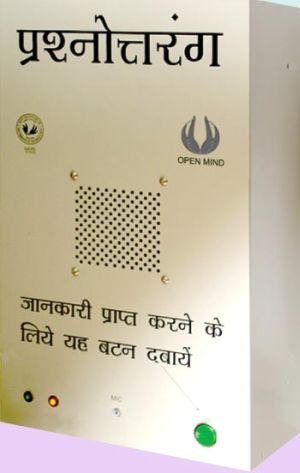 Hur gör man när man vill hitta information som finns på internet (och inte narcissistgooglar sig hela dagarna på DNs bekostnad) men bor avlägset på landet där det garanterat inte finns någon uppkoppling? Man "ringer" naturligtvis till någon som har Google!
Hur gör man när man vill hitta information som finns på internet (och inte narcissistgooglar sig hela dagarna på DNs bekostnad) men bor avlägset på landet där det garanterat inte finns någon uppkoppling? Man "ringer" naturligtvis till någon som har Google! IT World beskriver QuestionBox:
It works like this: A villager presses a call button on a physical intercom device, located in their village, which connects them to a trained operator in a nearby town who's sitting in front of a computer attached to the Internet. A question is asked. While the questioner holds, the operator looks up the answer on the Internet and reads it back. All questions and answers are logged. For the villager there is no keyboard to deal with. No complex technology. No literacy issues. And during early trials at least, no cost. Put simply, Question Box, as it's called, provides immediate, relevant information to people using their preferred mode of communication, speaking and listening.(World Wants To Know visar dessa frågor i realtid). (via: Slashdot)
Kolla också in Grameen-initiativet AppLab, där Google och mobiloperatören MTN Uganda förser fattiga i Uganda med användbara mobila applikationer.
Uppdatering 2009-09-04:
Följande låtar har "jesus" med i titeln i mitt iTunes-bibliotek:
- "Stronger Than Jesus" med A Camp
- "Story of the Grandson of Jesus" med Cloud Cult
- "U.B. Jesus" med David Byrne
- "Black Jesus" med Ghostface Killah
- "Jesus Walks" med Kanye West
- "Jesus For The Jugular" med The Veils
- "Jesus, Etc." med Wilco (det var den här jag letade efter).

Ännu mer fiktiva objekt! The Invisible Library samlar på fiktiva böcker som nämns i faktiska böcker. De har nu fått tillfälligt liv på galleriet Tenderpixel i London, där konstnärer från INK Illustration gett dom fiktiva omslag och några författare skrivet inledningar och avslutningar. Besökare på galleriet kan låna böckerna och fylla i resten av historien.
(Ovan: omslaget till Benno von Archimbaldis The Berlin Underworld, som omnämns i Roberto Bolaños 2666).
[via: Crooked Timber, också i The Guardian]
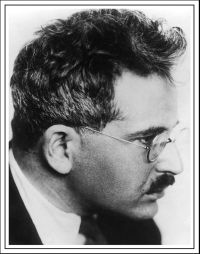 En udda artikel i en udda tidskrift: "Walter Benjamin and Biz Stone: The Scientific Paper in the Age of Twitter" i The FASEB Journal (där FASEB står för The Federation of American Societies for Experimental Biology).
En udda artikel i en udda tidskrift: "Walter Benjamin and Biz Stone: The Scientific Paper in the Age of Twitter" i The FASEB Journal (där FASEB står för The Federation of American Societies for Experimental Biology).Den driver rätt rejält med trenden kring sociala medier inom vetenskapen, t.ex. om hur Watson & Cricks DNA-papper från 1953 skulle ha sett ut om det publicerades idag (vilket påminner lite om "If Research Papers Had A Comment Section"):
This structure has novel features COMMENT: YEAH! HYDROGEN BONDING, LINUS!) which are of considerable biological interest. COMMENT: FOR WHICH I WROTE THE CHEMISTRY, ERWIN FORMAL CORRECTION: IT'S THE GENETIC MATERIAL, YOU FOOLS!, GENES! OSWALDFast samtidigt, en rätt skön reflektion om flanerandet på nätet som konstart:
It has not escaped our notice that the specific pairing FORMAL CORRECTION: BASE PAIRING A/T=G/C, ERWIN we have postulated immediately suggests a possible copying mechanism for the genetic material. COMMENT: LIKE WHAT? CONSERVED? SEMI? MATT COMMENT: MORTAL OR IMMORTAL? CAIRNS
We are much indebted to Dr. Jerry Donohue for constant advice and criticism, especially on interatomic distances. FORMAL CORRECTION: SEZ YOU! I TOLD YOU ABOUT THE KETO TO ENOL TAUTOMERS. YOU KNEW SQUAT FROM THE CHEMISTRY! JERRY We have also been stimulated by a knowledge of the general nature FORMAL CORRECTION: I SHOWED YOU THEIR PICTURES, MAX of the unpublished experimental results and ideas of Dr. M. H. F. Wilkins, Dr. R. E. Franklin FORMAL CORRECTION: YOU PEEKED, "DARK LADY" and their co-workers at King's College, London COMMENT: OUR TWO FOLLOWING PAPERS ARE DATA, YOURS IS A LEAP, MAURY.
More to the point: much of the Arcades Project prefigures the home page of a social network on the Web. Benjamin literally explores a network: the linked indoor shopping arcades of nineteenth century Paris, the Passages. I imagine a Benjamin today, reincarnated as the perennial flaneur; who follows a path in the Arcade of Panoramas. He stops occasionally at one site or another site. The flaneur ambles (surfs) along a protected space (MySpace) in which bustling crowds are reflected in shiny Windows. He adjusts his cravat in a store-front mirror (Facebook), and when the bell-tone rings in his pocket, he takes out his timepiece (Blackberry). He looks past his mirror image (YouTube), to find two generations of followers (Twitter).Uppdatering: PhD Comics - "Great Tweets of Science".
HBO gör TV-serie av Jeffrey Eugenides roman Middlesex, skriver The A.V. Club:
The adventures of Callie Stephanides, a hermaphrodite coming to terms with her family history and sexual identity in a Detroit suburb, should make for compelling viewing in the right hands. Those hands? American playwright and Yale literature professor Donald Margulies, who won a Pulitzer Prize in 2000 for his play Dinner With Friends.
Rymdhissar är vägen framåt för rymdturismen. Mycket grönare än de raketbaserade initiativ, såsom Virgin Galactic. InfraNet Lab skriver lite om framstegen inom forskningen för att skapa 20 km höga hissar, som ska ta dig på en 40 minuter lång resa för att få en schysst utsikt över Spaceship Earth.
Lite grann apropå gårdagens inlägg, kolla in Significant Objects: ett antal författare får i uppdrag att köpa billiga loppispryla, och skriver sedan en fiktiv historia om objektet ((t.ex. en byst av JFK i salt, för att slicka på) för att sedan sälja prylen på eBay tillsammans med historien.
 Foto: Sophie Gerrard
Foto: Sophie GerrardÅngrar jag den dryga timme det tog att transkribera de sista tio minuterna i Bruce Sterlings Reboot- prat? Nej, det kan jag inte direkt påstå. Kolla gärna från 32:23 in i videon, och läs med:
De nya fria konsterna, här är dom: attention economics, brevity, coding & decoding, creativity, finding, food, genderfuck, home economics, inaccuarcy, iteration, journalism, mapping, marketing, micropolitics, myth & magic, negotiation, photography, play, reality engineering, translation och video literacy.
De är i alla fall kapitelrubrikerna för boken New Liberal Arts, som jag nämnde när den annonserades häromsistens - "De fria konsterna 2.0".När boken sålt 200 ex kommer du kunna ladda ned den Nu går det fint att ladda ned boken (PDF), och ta reda på vad fan de menar.
De är i alla fall kapitelrubrikerna för boken New Liberal Arts, som jag nämnde när den annonserades häromsistens - "De fria konsterna 2.0".
Det var ett tag sedan jag var på Café Edenborg, men det var ändå sorgligt igår när nyheten droppade att man ska stänga 24 augusti. Mången krystad bloggrubrik har frammanats där. Well, life goes on.
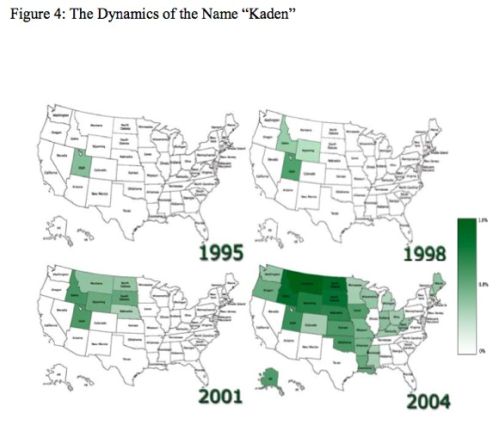 Israeliska forskare kommer fram till att det här med den "globala byn" och ett "gränslöst samhälle" är överskattat. Lokala connections är viktigare än globala sådana kommer man fram till genom att studera e-postande och facebookande...och, kanske lite mer överraskande, spridningen av bebisnamn i USA mellan åren 1970-2005 (för att jämföra pre- och post-internet).
Israeliska forskare kommer fram till att det här med den "globala byn" och ett "gränslöst samhälle" är överskattat. Lokala connections är viktigare än globala sådana kommer man fram till genom att studera e-postande och facebookande...och, kanske lite mer överraskande, spridningen av bebisnamn i USA mellan åren 1970-2005 (för att jämföra pre- och post-internet).Hypotesen är att nyblivna föräldrar kanske kunde tänkas vara lite globala i sitt tänkande när de skulle ge sina barn namn, men se det gick inte! Det är snarare tvärtom: fysisk närhet är ännu viktigare i IT-tidsåldern verkar det som.
Pappret: Jacob Goldenberg & Moshe Levy, "Distance Is Not Dead: Social Interaction and Geographical Distance in the Internet Era". arXiv:0906.3202v1
The exact point in time where the IT revolution took place is hard to define, and may be somewhat subjective. However, it is generally accepted that this revolution took place somewhere in the 1990's. If we take the middle of this decade as a reference point, we find that before 1995 the average value of the PEI (Proximity-Effect Index) shown is 0.203. In the post-1995 period the average value is 0.267. This difference is highly significant, with a t-value of 6.76. Thus, the baby-name data suggest that the IT revolution was accompanied by a significant increase in the importance of geographical proximity for social interaction.
Jag föreslår att du börjar med att titta/lyssnar på Bruce Sterlings prat från Reboot11, för att få lite ironisk doom & gloom:
...för att sedan få lite inspiration av Matt Webb (presentationsanteckningar):
Båda briljanta på sina sätt.
...för att sedan få lite inspiration av Matt Webb (presentationsanteckningar):
Båda briljanta på sina sätt.
Tre nya dinosaurier på marknaden, release Q2 2009:
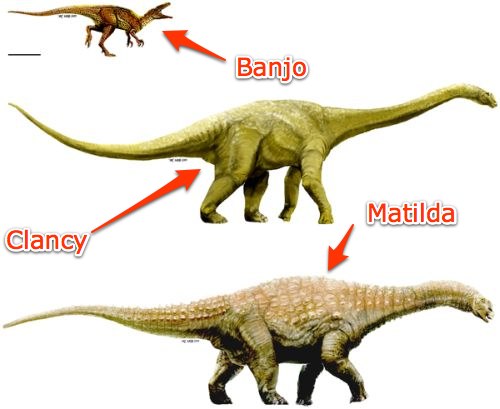
Varför heter modellerna som de gör? PLoS ONE-bloggen förklarar:

Varför heter modellerna som de gör? PLoS ONE-bloggen förklarar:
The three dinosaurs are nicknamed after characters from a world-famous, Australian poet, Banjo Patterson, who composed the song Waltzing Matilda in Winton, where the fossils were found. In a quirky twist of fate, Waltzing Matilda describes the demise of a swag-man, who steals a jumbuck (sheep) but has to leap into a billabong (a small oxbow lake) to avoid being caught by the police. He then drowns in the billabong along with the sheep.Originalartikel: 2009 New Mid-Cretaceous (Latest Albian) Dinosaurs from Winton, Queensland, Australia. PLoS ONE 4(7): e6190. doi:10.1371/journal.pone.0006190
Matilda and Banjo were found buried together in a 98-million-year-old billabong, although whether they died together or got stuck in the mud together remains a mystery; however, echoing the song, both predator and possible prey met their end at the bottom of a billabong.
Alain de Botton-utbrottet fick naturligtvis fötter. I en intervju med Edward Champion:
I en essä erkänner han sin naivitet:If you were to travel back in time on Sunday morning and you had two sentences that you could tell yourself before leaving the comment, what would those two sentences be?
Put this message in an envelope, not on the internet.
I have been naive here. My conclusion is that one has to be extraordinarily careful about the internet. Nothing that one types here that others could potentially access should ever be phrased in ways that wouldn't make one happy if a million other people happened to see it.
Det är inget mindre än kontrollen över flygplatsbokhandelsmarknaden som står på spel, när Malcolm Gladwell recenserar Chris Andersons Free i The New Yorker (ej läst). Vem kommer att gå segrande ur kampen om att vinna all världens businessresentärers gunst? Anil Dash sammanfattar Gladwells kritik som att bevisen som Anderson för fram är som bäst anekdotiska, utan några hårda vetenskapliga bevis. Precis just exakt samma kritik som brukar framföras mot Gladwells oeuvre, ju. Vilket Dash visar med en radda citat, och skriver:
I can't help but wonder if being ceaselessly criticized for using assertions and anecdotes in lieu of hard statistical data has left him much more inclined to criticize others for using the same technique.
NCBI ROFL är en nyligen upptäckt guldruva, där man varje dag får sig ett garv på andras bekostnad. Man hittar lustiga artiklar i PubMed. Nu senast en studie från 2004 i Journal of Sex Research (av forskare vid Ludwig Boltzmann Institute for Urban Ethology i Wien), med titeln "Disco clothing, female sexual motivation, and relationship status: is she dressed to impress?":
The relationship between a female's clothing choice, sexual motivation, hormone levels, and partnership status (single or not single, partner present or not present) was analyzed in 351 females attending Austrian discotheques. We digitally analyzed clothing choice to determine the amount of skin display, sheerness, and clothing tightness. Participants self-reported sexual motivation, and we assessed estradiol and testosterone levels through saliva sampling. Results show that females are aware of the social signal function of their clothing and that they in some cases alter their clothing style to match their courtship motivation. In particular, sheer clothing -although rare in the study- positively correlated with the motivation for sex.
 (Real Gabinete Portugues De Leitura, i Rio De Janeiro, Brasilien. Från här.)
(Real Gabinete Portugues De Leitura, i Rio De Janeiro, Brasilien. Från här.) Ett inlägg av Michael Nielsen om hur den vetenskapliga förlagsbranschen är dödsdömd (på samma sätt som en del menar att t.ex. tidningsbranschen är) om den inte ställer om och blir teknologi-driven, får en att fundera på sin egen profession och ens roll i det hela.
My claim is that in ten to twenty years, scientific publishers will be technology companies. By this, I don't just mean that they'll be heavy users of technology, or employ a large IT staff. I mean they'll be technology-driven companies in a similar way to, say, Google or Apple. That is, their foundation will be technological innovation, and most key decision-makers will be people with deep technological expertise. Those publishers that don't become technology driven will die off.Trots ett stort IT-intresse, så reagerar jag med magen och tänker att "så här lätt är det väl ändå inte", och att det handlar om naiv teknocentrism. Humanistmagen knorrar liksom. Men så provar jag att säga: "Om inte vår bransch (biblioteken, kanske specifikt såna som har med högre utbildning att göra) bestämmer sig för att radikalt vända sig i en teknisk riktining så kommer de att bli fullständigt irrelevanta". ...och det är rätt befriande. Detta trots att jobbar med högst otraditionella bibliotekssysslor, på ett bibliotek som verkligen anammat ny teknologi.
Man börjar tänka i nya banor, kring hur biblioteken bör organisera sig på nya sätt, på vilka utbildningar som är relevanta (sorry biblioteks- och informationsvetenskap, för lite fokus på Objective-C), på hur man ska rekrytera relevant kompetens ("vändningen" inom biblioteksvärlden mot pedgogik och lärande är en anpassning till existerande personals kunskaper, inte nödvändigtvis till vad som behövs i framtiden), en ny fräsch syn på innovation (som lyftes fram bra i SUHFs biblioteksframsspanargruppsrapport (PDF), vilket typ av ledarskap som behövs, osv, osv. Framför allt har man inga konkreta förslag.
Jag skulle själv förmodligen vara utan jobb.
 (Superdatorn MareNostrum på Universitat Politècnica de Catalunya, i Barcelona, Spanien. Från här).
(Superdatorn MareNostrum på Universitat Politècnica de Catalunya, i Barcelona, Spanien. Från här).Nielsen nämner några typer av tjänster som förlagsbranschen borde fokusera på (och till viss del redan gör), men jag tänker mig att det lika gärna kunde vara min "bransch" (i synnerhet om man vill ta tillbaka lite kommando från leverantörer av IT-lösningar, som Jonathan Rochkind menar att biblioteken bör göra): rekommendationstjänster, bättre sökmotorer för vetenskap, verktyg för kollaboration, sociala medier och ett engagemang i den semantiska webben.
(Man kan läsa JISC- och Demos-rapporten "The Edgeless University" om man vill, för att få ett lite större (och engelskt) perspektiv. (Trots att några av de bästa universiteten finns i Storbritannien, så riskerar man att hamna efter om man inte anammar ny teknologi, menar man).)
Uppdatering: jag kollar in About-sidan för New York Public Library:s NYPL Labs-blogg för att se vilka som är med i deras "Digital Experience Group", och räknar till 23 personer, med bl.a. följande titlar: "user experience designer" (2 st.), "digital producer" (7 st.), "senior web developer", "Java consultant", "Director of Digital Strategy and Scholarship", " Oracle consultant", "applications developer" (2 st.), "data programmer" (2 st.), "user analyst", "a/v producer", "metadata coordinator",
| www.flickr.com |
Jag heter Erik Stattin och det här är min blogg. Jag skriver om digital kultur, ungefär. Du får gärna tipsa mig om saker. Kontakta mig på erik.stattin@gmail.com. Jag är mymarkup på Twitter och Delicious.





